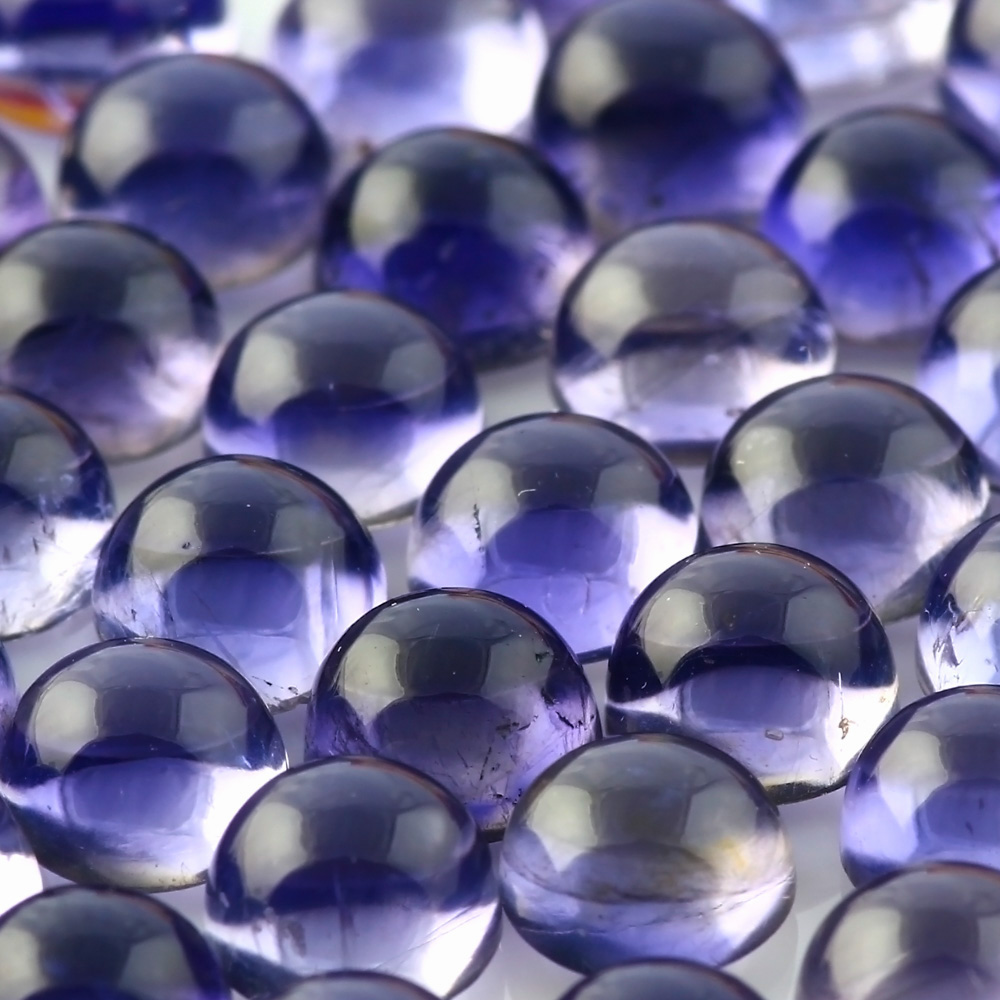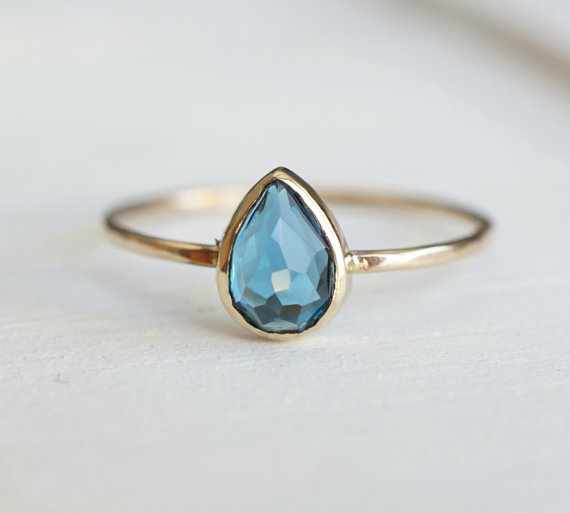Topaz is one of the November birthstones…or is it? The GIA rather confusingly states that Imperial Topaz is a birthstone for November, whilst blue topaz is a December birthstone. Other sources say that tanzanite, zircon and turquoise are December birthstones, which in my view is quite enough blue for one month. Added to that, I’m quite sure that lots of people don’t know the difference between Imperial and other forms of topaz. So I’m just going to treat all topaz as a November birthstone and be done with it. So let’s clear up the topaz issue, and you can do that quite easily by dividing it into treated and untreated. Untreated topaz comes in a broad colour range: yellow, brown, orange, pink, purple, red, as well as blue and colourless. Yellow is the most common and red is the most valuable. The name Imperial Topaz came into being in 19th century Russia, when the Ural mountains were the leading source for topaz and the deep pink colour mined there named for – and restricted to – the Russian royal family. Currently, many in the trade will define the paler oranges and yellows as Imperial topaz: as with the boundary between pink sapphire and ruby, there is no standardised definition or colour cross-over point. Actually, although you don’t see alot of it about, deep red, orange and pink topaz is absolutely stunning.

Imperial Topaz, 9.49 carats,15.62 x 10.75 x 6.31mm, Bonhams 
Imperial Topaz Earrings from Sarah Ho
And that brings me to the issue of price. For years the price of darker coloured blue topaz, especially London Blue topaz has steadily increased. There aren’t many places that do the treatment and this, combined with the fact that it has to sit for so long – and so therefore treaters have to tie up their money for so long with no return – added to the steady increase in popularity of this gem has made it rather scarce and expensive. It is no longer so easy to find large, flawless gems and sometimes the colour can be rather more greyish than desirable. It is a shame as it is a popular stone and the colour is unusual; I can’t think of many other stones like it, except maybe some of the darker blue tourmaline…and that is also not very plentiful and correspondingly pricey. Sky blue topaz has long been used as an alternative to aquamarine. This makes sense especially for smaller sizes as it is just a little more saturated than aquamarine generally is. Swiss Blue has a saturated and vibrant cornflower blue hue whilst London Blue is a sophisticated greyish-greenish blue.
Below from top, I love the elegant, flowing lines of Laura Stasa’s Calla Lily Pendant in silver and gold; although the icy blue topaz tones look great with white metals, I think that London Blue in particular is also sensational in gold. This pendant has an Art Deco quality to me, whilst at the same time being utterly contemporary. I really love jewellery with clean and definite lines like Kate Phipp’s tapered silver pendant set with a trillion sky blue topaz. This does illustrate how well the pale blue of this stone is set off by silver; icy perfection. The Swiss blue topaz ring by Mountain Spirit Jewels demonstrates the vibrant, saturated colour of this stone, for so long the best known and favourite colour of blue topaz, and bottom left, Kira Ferrer’s stacking rings sets all three colours in juxtaposition from light to dark in beautiful, clean settings.
There is one issue that is common to all topaz, however, and that is a property of the stone itself; cleavage. Topaz has what you call basal cleavage, which means that the cleavage plane is parallel to the base of the crystal. Cutters try to mitigate this by cutting the stones so that the cleavage direction is at a 15 degree angle to the table; however topaz can be rather brittle for this reason and does need a certain amount of careful handling.
Currently I sell blue and white topaz. I’d like to start offering other colours of untreated topaz – it is on my list of desired gems for next year.
To shop all of my topaz, click here.
joopygems.com




























